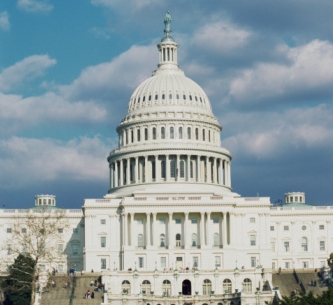 Anticipating a tough fight to get legislation passed during an election year, the American Wind Energy Association (AWEA) is seeking near-term legislative action as a means to extend the production tax credit (PTC), which, for wind power, expires at the end of the year.
Anticipating a tough fight to get legislation passed during an election year, the American Wind Energy Association (AWEA) is seeking near-term legislative action as a means to extend the production tax credit (PTC), which, for wind power, expires at the end of the year.
‘We're putting everything we've got into getting legislation to move in the next five weeks,’ Rob Gramlich, AWEA's senior vice president of public policy, tells NAW.
‘We've made extending the wind PTC our top focus this year," he says. "We're working with a broad coalition to encourage the leadership of both parties to include the PTC in the payroll tax cut extension when it comes up next month.’
Gramlich reasons that, when Congress meets in February about extending the payroll tax cuts, the discussions could include broader tax reform, such as those important to renewable energy. AWEA's position is that an omnibus tax package provides the best vehicle for attaching a rider, such as a PTC extension.
In fact, a conference committee comprising party leaders and representatives from the House Ways and Means Committee and the Senate Finance Committee has already met to begin reconciling the key components of a payroll tax extension, which expires Feb. 29.
AWEA hopes there is room in the bill for the American Renewable Energy Production Tax Credit Extension Act (H.R.3307), which was introduced last November by U.S. Reps. Dave Reichert, R-Wash., and Earl Blumenauer, D-Ore., who are members of the House Ways and Means Committee.
This bipartisan bill – which AWEA says has 56 co-sponsors, including 13 Republicans – extends the tax incentive for the production of wind power, geothermal power, hydropower and other forms of renewable energy through 2016.
While AWEA maintains that H.R.3307 has bipartisan support in the House, specific tax bills ‘almost never move on their own,’ Gramlich admits.
AWEA is also hoping that a coalition of 370 manufacturing, farm and business interests supporting H.R.3307 carries weight. In November, the coalition sent a letter to congressional leaders promoting wind energy as a clean, affordable electricity source that is critical to the country's security and economic development.
AWEA also intends to lean on the support of influential U.S. policymakers, such as Max Baucus, D-Mont., chairman of the Senate Finance Committee; Sens. Chuck Grassley, R-Iowa, and Tom Harkin, D-Iowa; and the 24 governors in the Governor's Wind Energy Coalition.
A recent report by Navigant Consulting finds that if Congress allows the PTC for wind to expire, jobs in the wind industry will be cut in half, meaning a loss of 37,000 U.S. jobs and a one-third cut in U.S. wind manufacturing jobs. Furthermore, private investment in the wind industry would drop by nearly two-thirds, the study says.
In addition to lobbying, AWEA's near-term plan includes both media outreach and grassroots efforts.
According to the organization, congressional leaders have received more than 60,000 ‘member communications’ on the PTC sent in the form of emails and faxes from AWEA-created websites, such as PowerofWind.com and SaveUSAWindJobs.com, a micro-site set up specifically for the PTC campaign.
According to Peter Kelley, AWEA's vice president of public affairs, more than 142,000 individuals have enrolled at PowerofWind.com to demonstrate support – which is up from 25,000 enrollees in February 2011.
‘Most importantly, companies know they should be sharing all their jobs information with their elected representation,’ Gramlich stresses.
Still, key questions remain. For instance, after funding the payroll tax extension, how much money would be available for other initiatives, such as the extending the PTC? Moreover, does the PTC have enough Republican support in the House to pass through the committee?
If legislative efforts to extend the PTC fail in February, there are still a few scenarios by which a PTC could be passed, such as in a lame-duck Congress following the November general election.
However, Gramlich says that option figures to be far less effective. ‘History shows us that it is hard to move policy in the summer and fall of an election year,’ he notes.



